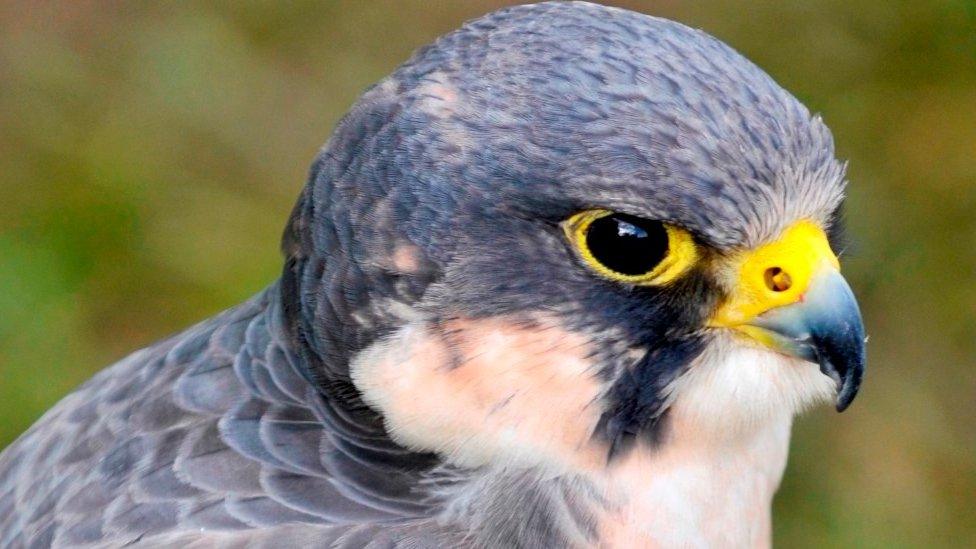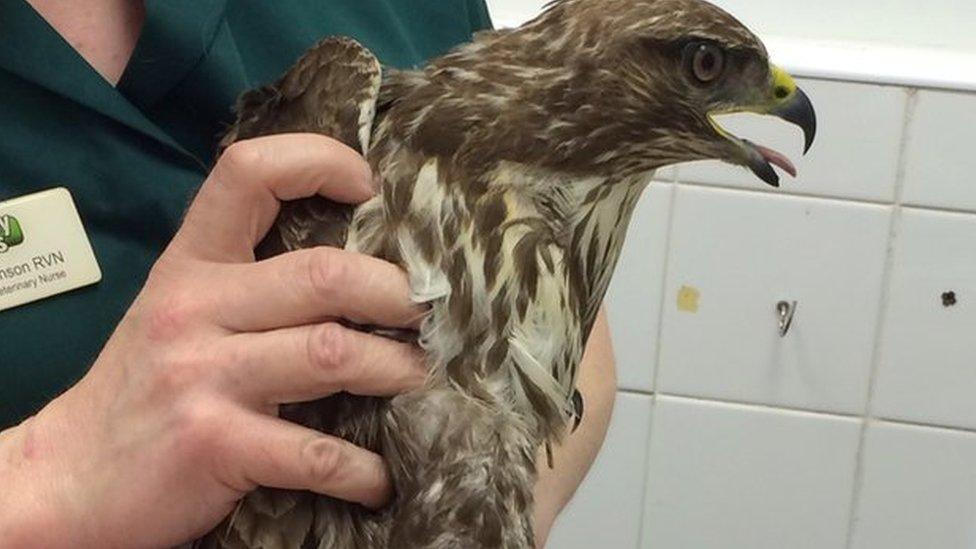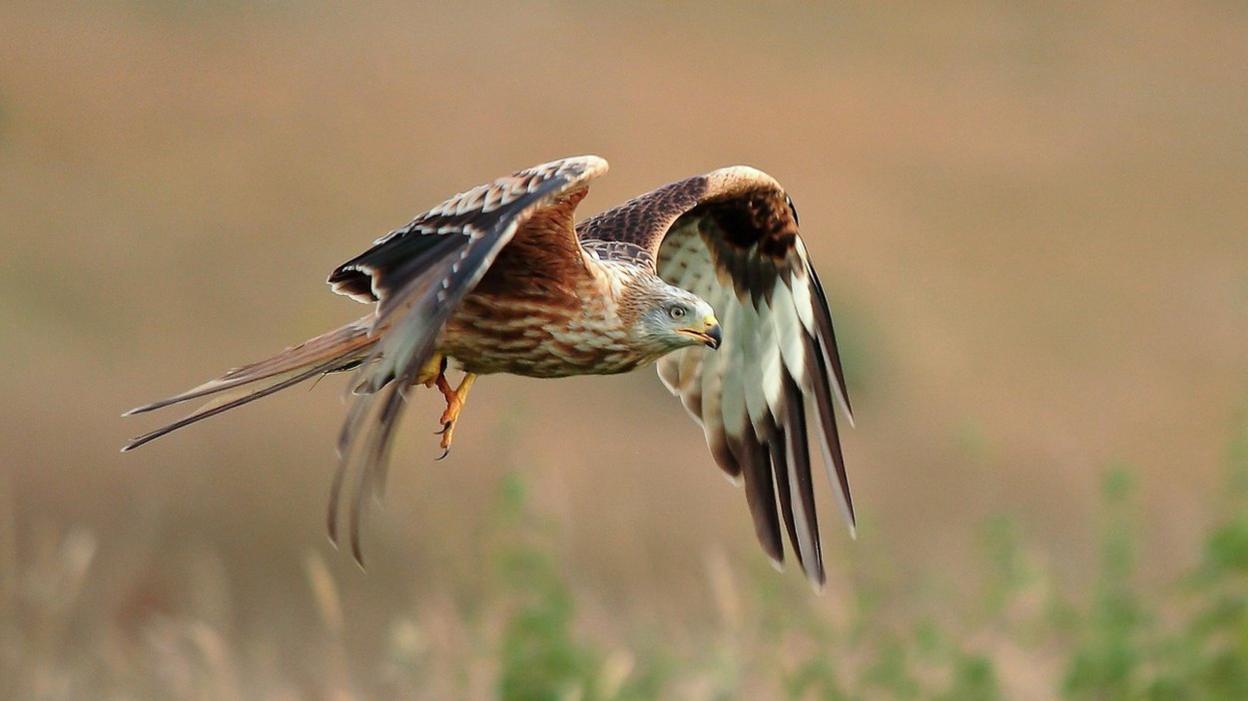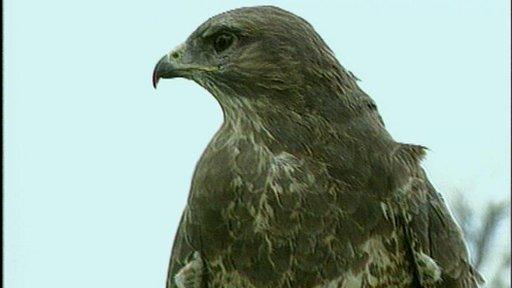Peak District bird of prey project results 'disappointing'
- Published

Peregrine numbers peaked in the national park in the late 1990s
A five-year project to boost bird of prey populations in the Peak District has returned "disappointing results", official have said.
The Bird of Prey Initiative, external aimed to increase breeding populations of raptors in the Dark Peak area of the national park.
Results showed peregrine numbers had declined while others were below expectations.
Illegal persecution and availability of prey were cited as possible causes.
Rhodri Thomas, ecologist with the Peak District Park Authority, described the results of the report as "concerning and disappointing".
The Dark Peak is a mostly wild area in the north of the national park - mostly within Derbyshire and South Yorkshire. It was designated with Special Protection Area, external status in 1996 due to being an important site for raptors.
The initiative - which focused on populations of merlin, peregrine falcon and short-eared owl - had aimed to restore numbers to the levels seen around the time of the designation.

Targets not met

Short-eared owls - 16 breeding pairs have been recorded nesting in the park, but it is thought the actual figure could be higher - the target is 25 breeding pairs
Merlin - Population stable with about 18 breeding pairs in the Dark Peak, but below the target of 32 breeding pairs
Neither the population nor breeding success targets for peregrine were met, both falling well short of the target
The number of peregrine occupied territories increased from six in 2012 to nine in 2014, but declined to a low of only four occupied territories in 2015
In 2006, two hen harrier nests successfully fledged 10 young. This was the first instance of hen harriers nesting in the Dark Peak since the 1800s
Goshawks were not actively monitored as part of the initiative; however both the number of pairs occupying territories in the Dark Peak and the breeding success remain low - well below the numbers present in the late 1990s
Source: Peak District Bird of Prey Initiative

Numerous theories have been put forward to explain the decline, including climate change, predation, disturbance and availability of food.
However, Mr Thomas said none had been proven.
He said in the case of short-eared owls the fluctuation in numbers was likely to be caused by the availability of food.


The scheme aimed to establish 15 breeding pairs of peregrine falcons in the national park - there are currently four pairs
Climate change has been suggested to explain the possible departure of merlin - which have been reported nesting and breeding at higher altitudes.
A decline in the numbers of young starlings as a food source has also been put forward as a reason, Mr Thomas said.
"Disturbance - either accidental or otherwise - is another possible cause," he said.
Mr Thomas said the decline in peregrine numbers was the hardest to explain as numbers in other parts of the park were increasing, and there was no obvious reason why they were staying away from the Dark Peak.
He added he was determined to "bottom-out" what was causing the decline.

Incidents involving birds of prey

Last year, this buzzard was found fatally injured with its leg caught in a metal spring trap on moorland, at Winscar Reservoir, near Holmfirth
During the project period there were no confirmed cases of illegal persecution involving any of the three target species, although in both 2013 and 2014 all activity ceased early at two merlin sites, despite birds previously being observed displaying and calling
In 2012, a goshawk nest on the edge of the project area was deliberately destroyed and four eggs found smashed on the ground nearby
In 2014, a goshawk was discovered dead near the southern part of the project area, the post mortem examination indicating injuries consistent with a spring trap
The same year, a buzzard was found fatally injured with its leg caught in a metal spring trap on moorland at Winscar Reservoir near Holmfirth - a second bird was shot dead near Glossop

- Published27 March 2014

- Published3 January 2014

- Published25 July 2013
